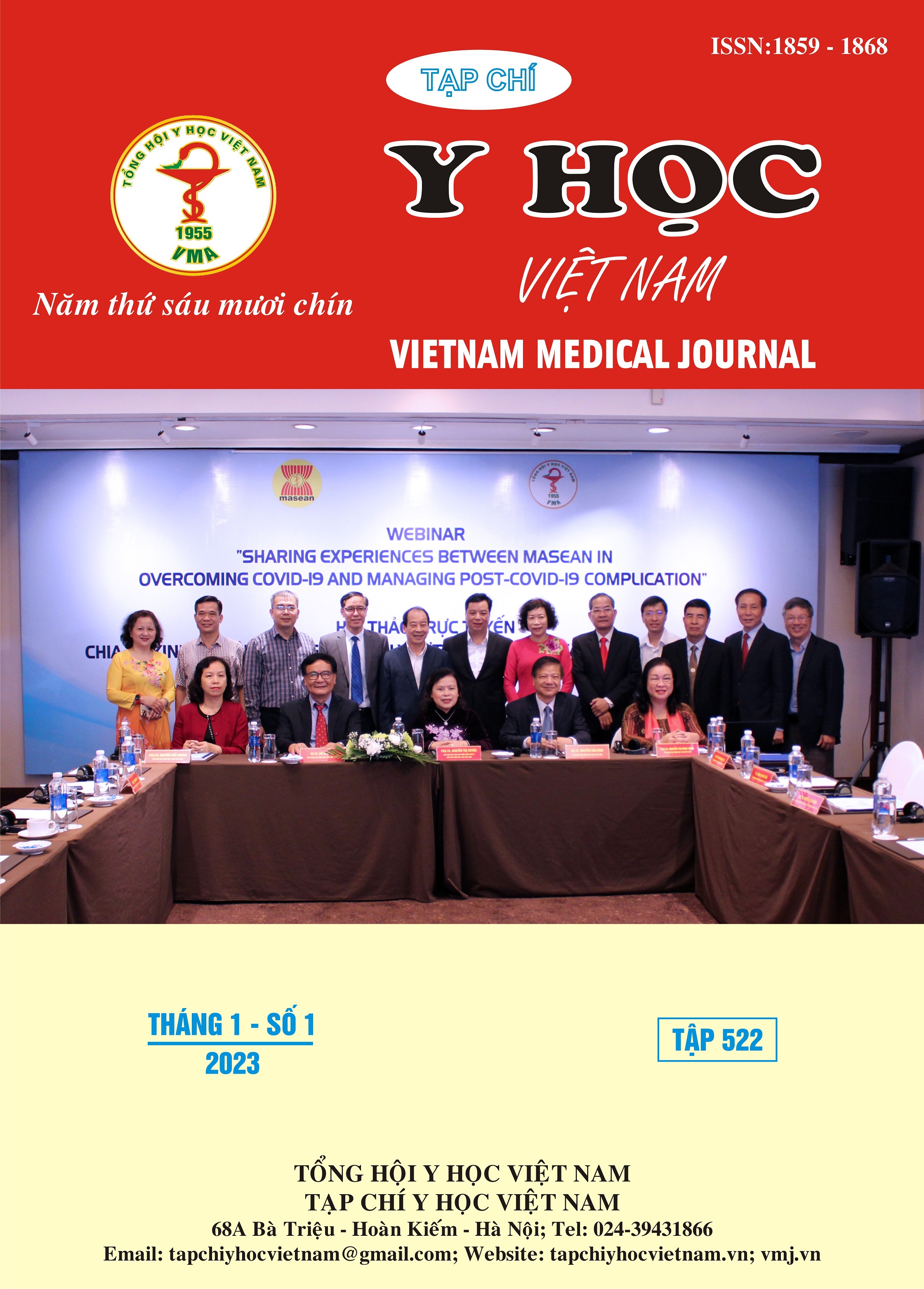TÌNH TRẠNG DI CĂN HẠCH VÀ MỐI LIÊN QUAN VỚI MỘT SỐ ĐẶC ĐIỂM GIẢI PHẪU BỆNH UNG THƯ BIỂU MÔ DẠ DÀY
Nội dung chính của bài viết
Tóm tắt
Mục tiêu: Ung thư dạ dày là bệnh lý ung thư phổ biến trên thế giới. Tiên lượng phụ thuộc vào típ mô bệnh học cũng như mức độ di căn. Nghiên cứu nhằm mục đích xác định tình trạng di căn hạch và mối liên quan với một số đặc điểm giải phẫu bệnh của ung thư biểu mô dạ dày. Phương pháp: nghiên cứu mô tả cắt ngang 222 bệnh nhân ung thư dạ dày nguyên phát đã được chẩn đoán xác định bằng mô bệnh học bệnh phẩm phẫu thuật tại bệnh viện K trung ương cơ sở Tân Triều. Mối liên quan giữa tình trạng di căn hạch và các đặc điểm giải phẫu bệnh ung thư dạ dày được xác định bằng kiểm định khi bình phương với mức ý nghĩa thống kê p<0,05. Kết quả: Trong 222 bệnh nhân nghiên cứu có 7 dưới típ mô bệnh học, trong đó UTBM tuyến ống chiếm tỉ lệ cao nhất (64,86%), tiếp đến là UTBM kém kết dính (27,93%). Tỉ lệ di căn hạch 62,16%. Tỉ lệ di căn hạch N0, N1, N2, N3a, N3b lần lượt là 37,84%; 17,57%; 19,37 %; 18,47%; 6,76%. Có mối liên hệ đồng biến giữa mức độ xâm lấn khối u (pT), hình ảnh đại thể khối u, xâm nhập mạch, xâm nhập thần kinh với tình trạng di căn hạch (p<0,05). Không có mối liên quan giữa các dưới típ mô bệnh học, vị trí khối u, kích thước khối u với tình trạng di căn hạch (p>0,05). Kết luận: bệnh nhân UTDD có tỉ lệ di căn hạch cao, có mối liên hệ đồng biến giữa mức độ xâm lấn khối u (pT), hình ảnh đại thể khối u, xâm nhập mạch, xâm nhập thần kinh với tình trạng di căn hạch.
Chi tiết bài viết
Từ khóa
ung thư dạ dày, di căn hạch, dưới típ mô bệnh học.
Tài liệu tham khảo
2. Nagtegaal ID, Odze RD, Klimstra D, et al. The 2019 WHO classification of tumours of the digestive system. Histopathology. 2020;76(2):182-188. doi:10.1111/his.13975
3. Laurén P. THE TWO HISTOLOGICAL MAIN TYPES OF GASTRIC CARCINOMA: DIFFUSE AND SO-CALLED INTESTINAL-TYPE CARCINOMA: An Attempt at a Histo-Clinical Classification. Acta Pathol Microbiol Scand. 1965;64(1):31-49. doi:10.1111/apm.1965.64.1.31
4. Brenner H, Rothenbacher D, Arndt V. Epidemiology of stomach cancer. Methods Mol Biol Clifton NJ. 2009;472:467-477. doi:10.1007/978-1-60327-492-0_23
5. Đỗ Trường Sơn. Phẫu thuật nội soi điều trị ung thư dạ dày tại khoa phẫu thuật tiêu hóa Bệnh viện Việt Đức. Tạp Chí Học Việt Nam. 2014;5(1).
6. Marrelli D, Roviello F, De Stefano A, et al. Prognostic Significance of CEA, CA 19-9 and CA 72-4 Preoperative Serum Levels in Gastric Carcinoma. Oncology. 1999;57(1):55-62. doi:10.1159/000012001
7. Li X, Liu S, Yan J, et al. The Characteristics, Prognosis, and Risk Factors of Lymph Node Metastasis in Early Gastric Cancer. Gastroenterol Res Pract. 2018;2018:1-7. doi:10.1155/2018/6945743
8. Nguyễn Tiến Bình. Đánh giá tình trạng di căn hạch của ung thư dạ dày pT1,pT2 tại bệnh viện K. Tạp Chí Học Việt Nam. 2022;511(2):218-221.


